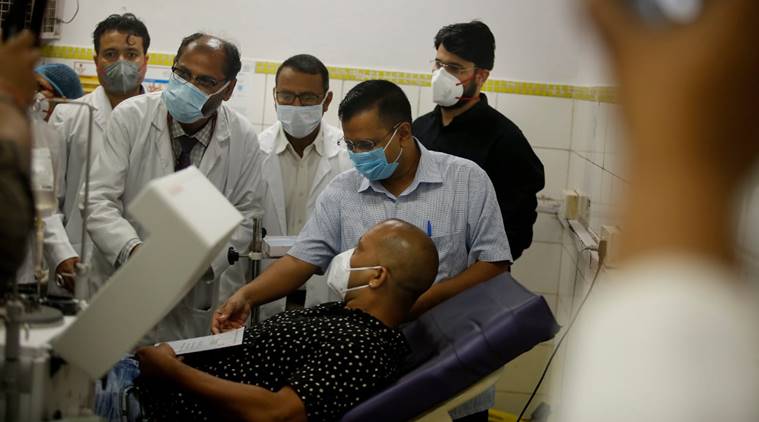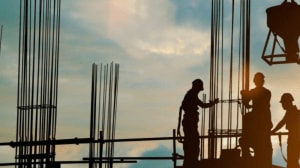Coronavirus: Trend continues of more recoveries than new cases in Delhi, CM says under control but stay cautious
Delhi Chief Minister Arvind Kejriwal said Wednesday that the capital’s Covid-19 growth has slowed, remaining well below previous projections
 Delhi Chief Minister Arvind Kejriwal at Delhi government’s second plasma bank at the Lok Nayak Hospital (Express photo: Praveen Khanna)
Delhi Chief Minister Arvind Kejriwal at Delhi government’s second plasma bank at the Lok Nayak Hospital (Express photo: Praveen Khanna)
For the past two weeks, Delhi has been on a path with declining active Covid-19 cases and higher recoveries per day as compared to new cases. Between July 2 and July 15, 27,191 people contracted the disease while 35,707 recovered from it, Delhi government data states.
Delhi Chief Minister Arvind Kejriwal said Wednesday that the capital’s Covid-19 growth has slowed, remaining well below previous projections, due to the Delhi government’s decision to work in tandem with the Centre, NGOs, spiritual organisations, and its policy of home isolation.
Addressing a webcast on the city’s Covid-19 situation, which he said was “under control”, the CM, however, cautioned that there was no room for complacency.
“We were expecting 2.5 lakh cases by July 15, as per the Centre’s formula based on the previous trend of Covid growth. There were supposed to be 1.34 lakh active cases, for which 34,000 beds were required. But due to close coordination between the local administration and the Centre, we have about 18,600 active cases currently. Only 4,000 hospital beds are occupied out of 15,000. The situation is under control but we can’t afford to be complacent as cases may go up any time,” Kejriwal said.
On Wednesday, the city saw 1,647 new Covid cases and 2,463 recoveries. The total case count in Delhi so far is 1,16,993 and of these 17,807 are active.
The number of active cases, too, has been declining in the city over the past two weeks. A small increase was seen on two days – July 6 and July 7. While the number of active cases touched 28,329 on June 27 – the highest so far – it dipped to 17,807 on Wednesday. Active cases in the city were below the 18,000 mark in the first week of June before this.
Last month, the state government had projected that Delhi’s case count would be 1 lakh by the end of June, 2.5 lakh by July 15, and 5.32 lakh by July 31. It had also said the city will require at least 15,000 beds by June 30, 33,000 by July 15, and 80,000 by July 31.
“We realised that many were not getting tested on time. Not enough ambulances were available. Now, there are enough ambulances and no distress calls are rejected. The lengthy procedural formalities before hospital admissions were also claiming lives. Now, we have created holding areas in every hospital where patients are administered oxygen even as formalities take place. We had 4,100 beds on June 1 and 15,000 beds now. There were 300 ICUs on June 1 which have risen to 2,100 now, out of which 1,000 are occupied. We are also banking on plasma therapy till the vaccine arrives,” Kejriwal said.
He also said that the number of deaths had fallen significantly from around a 100 a day in the beginning of June to an average of 30-35 now. He attributed the high rate of deaths recorded previously to delayed testing, shortage of ambulances, and lengthy formalities before admissions in hospitals.
The Delhi government has created two plasma banks in two hospitals, Institute of Liver and Biliary Sciences and Lok Nayak.
Kejriwal also said Lok Nayak had made a remarkable turnaround. “When things were going wrong, everyone was pointing out faults. We did not get perturbed and tried to address the shortcomings. Today, Lok Nayak is being praised… We are in a better position as compared to June but that does not mean we have won the war,” he said.
Kejriwal said the ‘Delhi model’, which has been “praised by the Prime Minister as well”, is rooted in the principles of collective approach and teamwork.
“The Centre helped us in starting rapid antigen tests, increasing capacity of testing. Home isolation is another pillar on which the Delhi model stands. Even today, in many states, testing is not being done as home isolation facility is not available,” he said.







